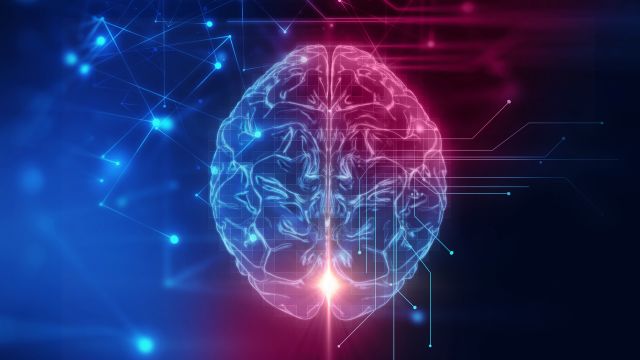Updated on March 28, 2023
You might have heard of electroconvulsive therapy (ECT), commonly known as electroshock therapy. If so, you may have preconceived notions about what it involves. It’s important to understand that this treatment has changed dramatically over the years; it’s now safer, has far fewer side effects, and is helping to save people’s lives.
ECT is a procedure typically used to treat severe mental illness when other treatments haven’t been effective. During ECT, a small electrical current is passed through a person’s brain while they are under general anesthesia. The current causes a controlled seizure in the brain.
Experts are not exactly sure how this helps, but believe it improves brain chemistry and helps to ease symptoms, says James Saccomando, MD, a psychiatrist at West Valley Medical Center in Boise, Idaho.
“With ECT, we use a tiny bit of electricity, much smaller than what comes out of a wall socket,” says Dr. Saccomando. “By doing that a number of times over about three or four weeks, people's moods get amazingly better. In fact, ECT is considered the best treatment for severe depression because it has such a high chance of working, and it's very safe.”
Despite this, many misconceptions about ECT still remain. Here are some of the top myths surrounding this procedure, plus what to expect if you need ECT.
Myth: ECT is rarely used.
Fact: ECT is administered regularly in psychiatric hospitals and outpatient clinics across the country. “More than 100,000 treatments of ECT are done each year in the United States. This is probably much less than it should be due to the negative stigma attached to this procedure,” says Saccomando.
ECT is used to treat a wide range of conditions, including:
- Severe depression
- Schizophrenia
- Mania, or a state of intense hyperactivity
- Catatonia, or a state in which a person is awake, but mentally absent or unresponsive. (During those times, the person may even be unable to eat or drink.)
The process can be expensive, with each treatment costing $300 to $1,000. And, like any medical procedure, it carries risks, so it’s typically considered after other options have been exhausted. In severe cases, it’s often able to provide relief when medications and other therapies have failed.
ECT is considered safe and effective in special populations, including pregnant women and geriatric patients. A 2018 literature review published in the Archives of Women’s Mental Health showed that risks associated with ECT during pregnancy were similar to those in pregnant people who did not receive ECT. The most common risk was pre-term contractions and labor.
A 2017 literature review published in the Journal of Geriatric Mental Health noted positive responses in older adults with severe depression, with up to an 80 percent success rate.
It’s sometimes used in emergency situations when other treatments aren’t possible, as well. For example, if someone is aggressively trying to complete a suicide and there’s no time to wait for antidepressants to start working, ECT may be necessary. If you or someone you know has thoughts of self-harm, call the National Suicide Prevention Lifeline at 1-800-273-8255 or call, text, or chat 988. If someone is actively considering suicide, call 911 right away or go to the nearest emergency room.
Myth: ECT is outdated and inhumane.
Fact: The procedure has changed dramatically over the years; new techniques are far safer and more effective.
“The drugs we use for ECT only stay in your body for about half an hour or so,” says Saccomando. “On the other hand, psychiatric medications are always in your system since you take them every day.”
You might have wondered about the serious risks associated with old versions of ECT, such as injuries from uncontrolled seizures. Today, those are no longer side effects of concern.
Instead, people might experience:
- Mild headaches or jaw pain
- Muscle aches
- Anesthesia side effects like weakness and nausea
- Short-term confusion
Mild memory loss—usually involving the time surrounding ECT—is also a possible side effect. For many, it improves within a couple of months after their procedure.
More research is needed to confirm its long-term effects and some experts raise concern over the possibility of relapse after use of ECT. Additionally, the benefits might not outweigh the risk in every case. For example, ECT might not be appropriate for someone who is already seriously ill, especially if they have a heart condition because ECT increases blood pressure, heart rate, and cardiac output.
Myth: You’re awake during ECT.
Fact: You’ll undergo general anesthesia.
Before you start, you’ll receive sedation from general anesthesia, as well as a muscle relaxant. That keeps your body still during the procedure, protecting you from injuries. Once you’re asleep, the procedure takes about 5 to 10 minutes.
To begin, a healthcare provider (HCP) will place small electrodes, or sticker pads that transmit electricity, on one or both sides of your head. The HCP will then send a small electrical current through the electrodes. That causes a controlled seizure that lasts less than one minute. HCPs track this activity on a screen using an electroencephalogram, or EEG machine, which detects brain waves. You’ll be monitored closely the entire time to make sure your heart, brain, and vital signs stay safe.
Because you’ll be recovering from general anesthesia, and because mild memory loss is a possible side effect, you should not drive a car for two weeks after ECT is complete.
“You’ll be somewhat impaired with memory and thinking afterwards, so we always recommend that you have a friend take you home,” says Saccomando.
Myth: You’ll be cured after one session.
Fact: Most people require multiple sessions or routine ECT to relieve their symptoms.
Your diagnosis and the severity of your condition will determine the number of times you need ECT. Often, it’s given about two to three times per week, for about three to four weeks.
Your symptoms should improve slightly after each session, and many people start to feel an improvement after about six sessions (two weeks). Even if you experience significant improvement, you’ll still need to continue with routine treatments like talk therapy to help manage your symptoms over time.
Studies conflict on exactly how long the positive effects of ECT last. Many people require routine or occasional ECT after their initial treatment series, especially when no medication seems to work. But there’s about a 70 to 90 percent chance that ECT will help somebody with depression improve.
“People are always very anxious when they get ECT for the first time,” says Saccomando. “But once they've done it a few times, they realize it’s nothing to really be worried about. Then they get enthusiastic because they start seeing the results.”






